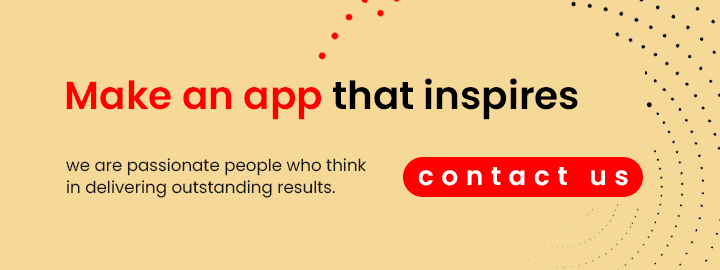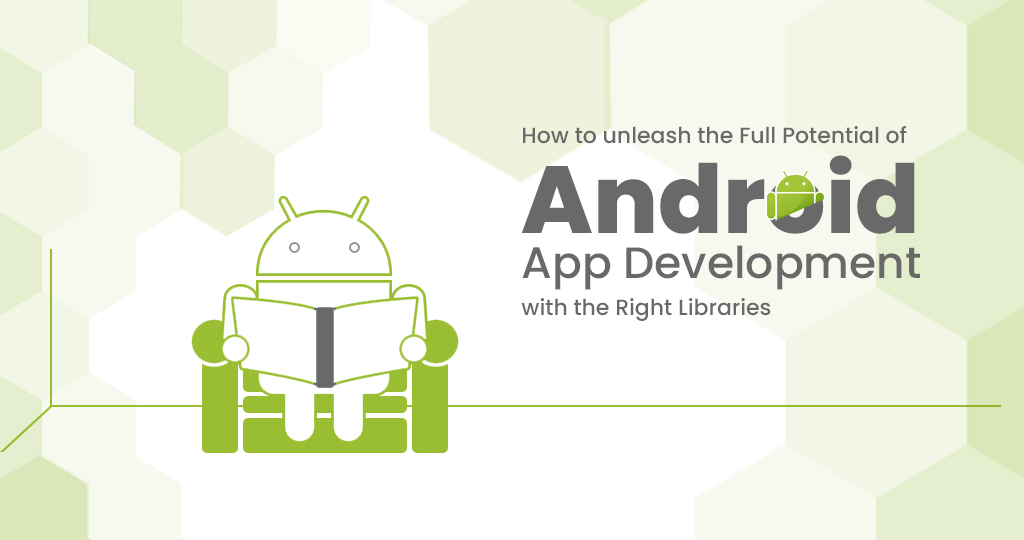Statista reports that Android OS accounted for 71.1% of the market in the fourth quarter of 2022. This statistic demonstrates Android's dominance in the smartphone market. However, creating a high-end Android application necessitates extensive knowledge of tools, application/UI components, a set of libraries, and Android development IDEs. And libraries serve as the backbone of the Android app development process.
What are the libraries in Android?
Libraries in Android refer to pre-built sets of code or collections of reusable components and functionalities that developers can utilize in their Android applications. These libraries are designed to simplify the development process, promote code reusability, and enhance the overall efficiency and functionality of Android apps.
By incorporating libraries into their projects, developers can save time and effort by leveraging pre-existing solutions instead of building everything from scratch.
Accessing these libraries can expedite the development process and help develop a secure app without additional effort. Android libraries are developed by the entire developer community, and act as a public repository of Android approved / compatible code libraries, so you can avoid the necessity to create specific components from scratch. Top Android App Development Companies in Dubai leverage the power of these libraries to create powerful Android applications for clients.
If you are unsure which libraries to use and how they can help you, this article is designed to provide you with an introduction to the latest libraries available right now.
Why do we need Android libraries for Android app development?
In a nutshell, android libraries are a collection of behavior implementations written in a programming language with a well-defined interface. One of the best features of the Android library is that it provides configuration data, documentation, message templates, help data, pre-written code, subroutines, and values.
Choosing the right Android libraries is a surefire way for any Android app developer to expedite and optimize app development. It is simple to create an app with rich features that will help you take your business to the next level with ease using libraries.
Top 10 Android libraries for developers in 2023
Digital mobile app development has undergone a significant shift with Android libraries, regardless of stack or platform. With efficient libraries, you can fully utilize the technical functionality with less boilerplate code.
Here is the list of the 10 best and most recent Android libraries in 2023.
1. Dagger2
Dagger 2 is the most powerful dependency injector available, relying on Java annotation processors and fast compilation procedures. While other Java libraries require XML parsing during compilation, this imposes performance penalties. Using the Dagger 2 injector allows for easy access to shared instances and the creation of a large application that requires virtually zero maintenance.
2. Retrofit
In Retrofit, an API is intelligently translated into a client interface by using annotations, which are type-safe REST clients for Java and Android. It used to be necessary to run an Async task class before using a HttpsUrlConnection to fetch data from a network request, which was not ideal when dealing with APIs returning large amounts of data. Additionally, this Android library uses converters to take care of parsing POJOs.
3. Picasso
The open-source image library Picasso is widely used by top Android app developers. Any Android developer who wants to download images from a server must write a lot of code. But with Picasso, the task only requires a few lines of code. Additionally, it can transform images using cache, auto storage, and minimal storage. Picasso automatically recognizes reuse. Information and downloads that have already been made are deleted automatically.
4. Glide
The Bumptech-developed Android library, which Google supports, is used in several open-source initiatives. Images can be gathered by Glide from numerous different sources.
5. EventBus
EventBus is one of the best Android libraries for its ability to simplify component-to-component communication by separating events between the sender and recipient. An important factor in the development of the business model was the publisher-subscriber relationship.
6. Zxing
Zebra Crossing or Zxing is a Java library for Android that analyzes barcode images. It also supports one-dimensional products, one-dimensional industrial, and two-dimensional barcodes. In addition to Android Barcode Scanner, Google Book Search and Google Product are also integrated with this library.
7. ButterKnife
Boilerplate code for Android is produced by ButterKnife using an annotation-based library. For developers, making view-binding Android libraries can be very useful. Developers can create bindable and drawable-based strings for their views and other data sources using ButterKnife. Any application can use it to its advantage. This Android library eliminates the need for onClick and onTouch.
8. MylittleCanvas
MyLittleCanvas is one of the best libraries for Android programmers. However, objects can now be used in place of methods, which defeats the purpose of the library, which was to make working with canvas on Android easier.
A customized underline on a TextView is one of the features made possible by using this Android module. The methods TextShape, RoundRectShape, DrawableShape, RectShape, PathShape, LineShape, and CircleShape are also supported by Canvas.

9. Android Databinding
This is a basic built-in library that works exceptionally well, especially on older versions of Android Studio 1.3 Framework. Using Data Binding on Android, you can connect UI elements to data sources declaratively instead of coding. Activities are often laid out using UI framework functions. There are no annotations like those in ButterKnife. It calls findViewById() to locate the TextView widget when it is bound to the userName property of viewModel.
10. Navigation
Android apps provide location-based navigation. Android apps can only use navigation libraries. Any app that offers a suitable API can use it, regardless of the intended implementation. Additionally, activities and fragments can also be included in your project. As a navigation dependency, you must include the Google Maven (support libraries) repository.
Conclusion
Android developers have a wide range of resources at their disposal, including libraries, to innovate and create the best apps for users. These libraries help create Android apps because they have the newest features. With more people using Android, Android libraries are relevant and necessary. It's crucial to conduct research and select the best library you can for the application you are creating. Although developers may feel lost in choosing the best library for their needs, this quick list of the best Android libraries to use in 2023 can help ensure programmers aren't overwhelmed by the choices.
But if you are unsure how to implement these libraries in your android app build, maybe you can look for some expert help. Way2Smile Solutions is a well-reputed Mobile app developers in Dubai that can assist you in creating distinctive and durable mobile apps for any use.




